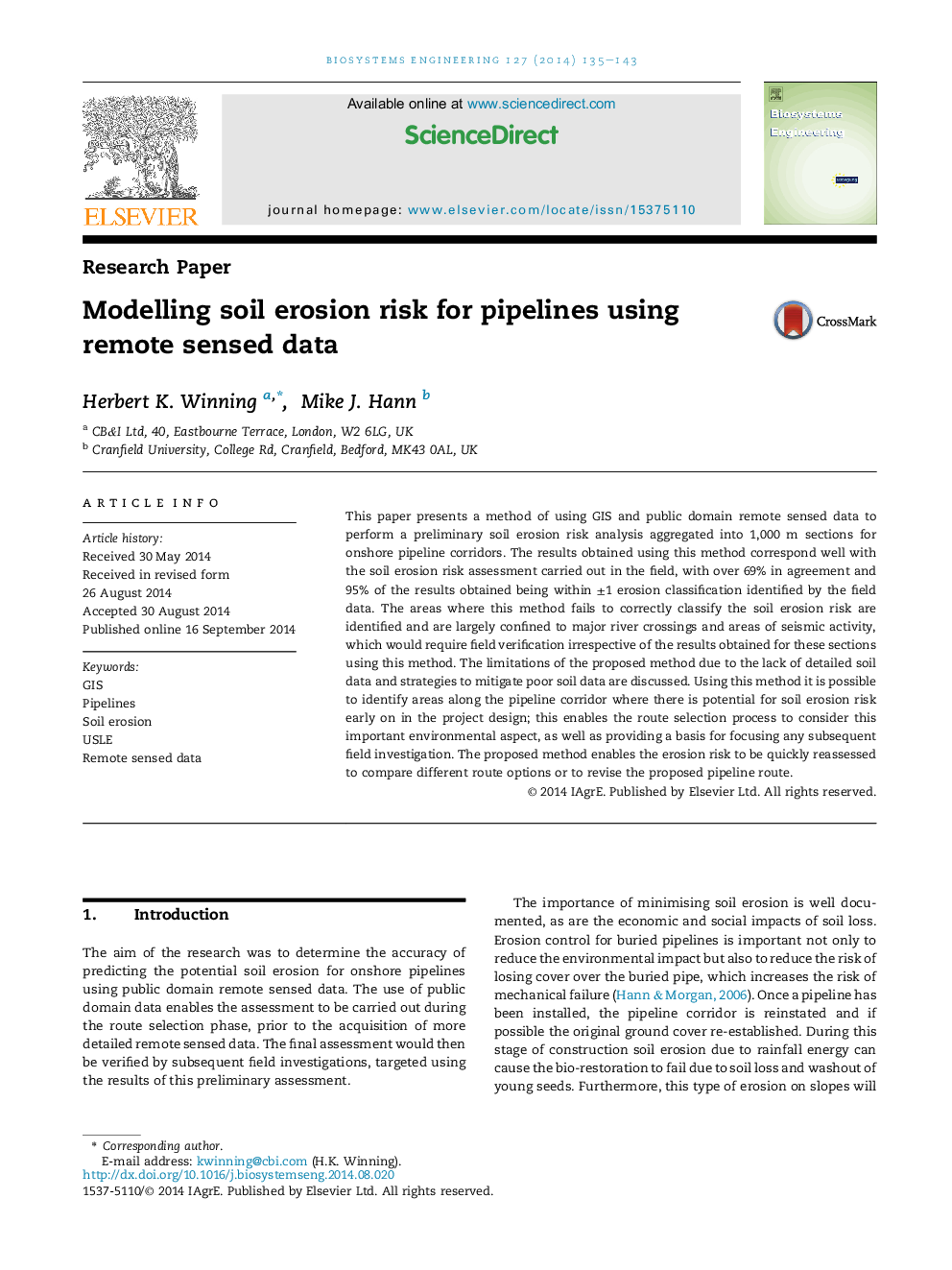| Article ID | Journal | Published Year | Pages | File Type |
|---|---|---|---|---|
| 1711111 | Biosystems Engineering | 2014 | 9 Pages |
•GIS model for estimating soil erosion risk using public domain remote sensed data.•Results compared to soil erosion risk defined by field visit, with 69% in agreement.•Areas where the model is not in agreement discussed and mitigation methods proposed.•Early identification enables input into route selection and areas for field review.•Enables comparison of routes and quick estimation for route revisions.
This paper presents a method of using GIS and public domain remote sensed data to perform a preliminary soil erosion risk analysis aggregated into 1,000 m sections for onshore pipeline corridors. The results obtained using this method correspond well with the soil erosion risk assessment carried out in the field, with over 69% in agreement and 95% of the results obtained being within ±1 erosion classification identified by the field data. The areas where this method fails to correctly classify the soil erosion risk are identified and are largely confined to major river crossings and areas of seismic activity, which would require field verification irrespective of the results obtained for these sections using this method. The limitations of the proposed method due to the lack of detailed soil data and strategies to mitigate poor soil data are discussed. Using this method it is possible to identify areas along the pipeline corridor where there is potential for soil erosion risk early on in the project design; this enables the route selection process to consider this important environmental aspect, as well as providing a basis for focusing any subsequent field investigation. The proposed method enables the erosion risk to be quickly reassessed to compare different route options or to revise the proposed pipeline route.
